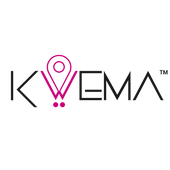The new normal is a term that we have heard almost everywhere. It is clear that the way we perform our daily activities has changed, including how we are reopening our economy. Now, employers are facing new threats in the light of bringing back employees to workplaces. Moreover, companies have questioned what kind of liabilities, incentives or considerations will have to be performed in order to keep their employees safe.
Today, we discuss some key considerations that employers should know whether employees are back to the workplace or continue working from home.
General health screening
Companies have the responsibility of mitigating the coronavirus transmission in their workplace. Employers can ensure a safe workplace by implementing formal health-checks procedures before employees enter into the facilities. You can ask your employees to take their own temperature before coming to the workplace or you can perform routine screenings following CDC recommendations. Even though screening employees is an optional measure, it is a good idea to have a back-up plan in case new health procedures are updated in your state.
Health and safety workplace practices
Back to the new normal requires improvements in existing health and safety protocols and procedures or even to create new ones. Not only are employers responsible to provide resources such as hand sanitizers and PPE but also have to educate employees on hygienic practices. Ensure a safe workplace by encouraging employees washing their hands regularly as well as providing them special training on how to use/wear PPE and clothing properly.
Protect workforce mental health
These days, mental health has become a big concern. It is normal that employees continue to experience anxiety, stress and uncertainty after having been in social distancing for months. In addition, the way employees cope with these emotions can affect their well-being, people around them as well as their performance at work. For this reason, it is important that both HR and safety supervisors receive training on how to recognize symptoms of stress and anxiety. You can read our blog How To Manage Work Stress During the Pandemic which contains useful tips for building resilience.
Investment in remote work
Huge number of employees are now working remotely, and in sight of this undefined situation, working from home is a part of the new normal. The reality is that this migration has not been easy for all companies. The lack of infrastructure, work schedule adjustments as well as potential loss productivity risks are some challenges in implementing remote working. But investment in remote working is not just providing a good computer. It means that employers need to provide clear guidelines and show themselves with commitment in order to guarantee a successful migration as well as maintain business operations. There are many companies that have provided training to employees and managers on how to successfully work from. For instance, Microsoft has created its own guide to working from home.
Safety inspections in employees’ homes
According to OSHA standards, employers have limited responsibilities for health and safety of the employees’ working conditions. However, injuries and accidents can occur while employees are performing their work activities and will be considered work-related illnesses and injuries.
Employers can ensure that employees’ homes are safe places to perform their work activities. Employers can ask employees to fill a safety requirements survey or do inspections themselves if they prefer. Think on what kind of hazards could put employees in danger. Check that the designated work area is comfortable and safe by having ergonomic office furniture and counts with enough air ventilation and good lighting. Verify if there are exposed extension cords. Decide if it is necessary to install fire extinguishers and smoke detectors. For instance, Google says it will allow employees to expense up to $1,000 for home office needs such as ergonomic chairs and standing desks.
Communication maintenance
For some employees, working from home has become a dream because of all comfort that comes with it. But the reality is that not everyone reacts in the same way. Some employees will need more motivation, support and interaction. PwC's recommendations for managing a virtual workforce include keeping a regular communication between employees by organizing virtual meetings and breaks as well keeping them updated about business circumstances. The main goal is trying to look for creative ways of communicating and create a transparent, productive, and safe atmosphere.
Kwema is a company that mitigates the safety risks that employees face by providing wearables that activate an emergency protocol. Our technology is designed to avoid adoption hurdles and training costs by being placed in something many employees already wear.
Watch how Kwema is disrupting workplace safety
Photo by August de Richelieu from Pexels
new normal
post-covid new normal
new normal workplace
new normal workplace after covid
new normal at work
